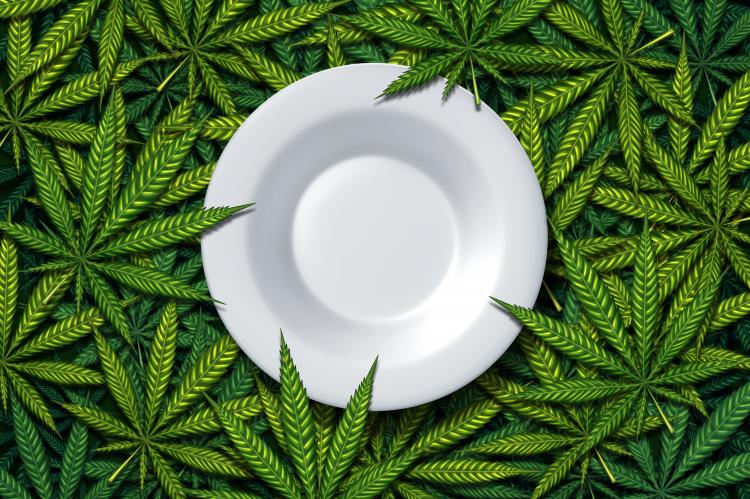Modeling Cannabis Safety from Food and Beverage Quality Regulations
There’s a reason you can eat or drink pretty much anything you want from American grocery stores and not get sick. Food manufacturing is highly regulated and subject to rigorous quality control.
Before food and beverages hit store shelves, the manufacturer must have a Hazard Analysis Critical Control Point (HACCP) system in place. The HACCP system requires that potential hazards—biological, chemical and physical— be identified and controlled at specific points in the manufacturing process. In addition, fresh foods undergo a kill-step. This is the point in the manufacturing or packaging process where food is treated to minimize and remove deadly pathogens like bacteria, mold, fungus and E. coli.
Generally speaking, when cannabis hits dispensary shelves, a less stringent set of rules apply, despite the fact that cannabis is ingested, inhaled and used as medicine. Cultivators are required to test every batch, but each state differs in what is required for mandated testing. Compared to the way food is regulated, the cannabis industry still has a long way to go when it comes to consumer safety—and that poses a considerable public health risk. In the early stages of legalization, the handful of legal states did not have rigid cannabis testing measures in place, which led to inconsistent safety standards across the country. State governments have had a reactionary approach to updating testing guidelines, by and large implementing stricter standards in response to product recalls and customer safety complaints. While local regulators have had the best intentions in prioritizing consumer safety, it is still difficult to align uniform cannabis testing standards with existing food safety standards while cannabis is a Schedule I substance.
The stark differences in safety measures and quality controls were first obvious to me when I moved from the food and beverage industry into the cannabis industry. For five years, I operated an organic, cold-pressed juice company and a natural beverage distribution company and had to adhere to very strict HACCP guidelines. When a friend asked me for advice on how to get rid of mold on cannabis flower, a light bulb went off: Why was there no kill step in cannabis? And what other food safety procedures were not being followed?
What to know more about all things quality, regulatory and compliance in the cannabis industry? Check out Cannabis Industry Journal and sign up for the weekly newsletterThe current patchwork of regulations and lack of food safety standards could have dire effects. It not only puts consumer health in jeopardy, but without healthy crops, growers, dispensaries and the entire cannabis supply chain can suffer. When a batch of cannabis fails microbial testing, it cannot be sold as raw flower unless it goes through an approved process to eliminate the contamination. This has severe impacts on everyone, starting with the cultivator. There are delays in harvesting and delivery, and sometimes producers are forced to extract their flower into concentrates, which really cuts into profits. And in the worst cases, entire crop harvests may have to be destroyed.
So, what do cannabis cultivators and manufacturers have to fear the most? Mold. Out of all the pathogens, mold is the most problematic for cannabis crops, perhaps because it is so resilient. Mold can withstand extreme heat, leaving many decontamination treatments ineffective. And most importantly, mold can proliferate and continue to grow. This is commonplace when the cannabis is stored for any length of time. Inhaling mold spores can have serious adverse health effects, including respiratory illness, and can even be deadly for immunocompromised consumers using it for medical reasons.
What the industry needs is a true kill step. It’s the only way to kill mold spores and other pathogens to ensure that they will not continue to grow while being stored. States that mandate microbial testing will benefit from the kill step because more cultivators will be in compliance earlier in the process. In states that don’t require comprehensive microbial testing, like Washington and Oregon, the kill step is a critical way to provide consumers with a preemptive layer of protection. Microbial testing and preventative decontamination measures encourage customer brand loyalty and prevents negative press coverage.
Adopting a HACCP system would also build additional safeguards into the system. These procedures provide businesses with a step-by-step system that controls food safety, from ingredients right through to production, storage and distribution, to sale of the product and service for the final consumer. The process of creating HACCP-based procedures provides a roadmap for food safety management that ultimately aligns your staff around the goal of keeping consumers safe.
It’s high time for the cannabis industry to adopt FDA-like standards and proactively promote safety measures. Cannabis growers must implement these quality controls to ensure that their products are as safe to consume as any other food or drink on the market. Let’s be proactive and show our consumers that we are serious about their safety.
Share this: Related Articles
-
Safety regulations are in place for food, but who is responsible for the safety of cannabis consumables?
-
Find out about next month's upcoming webinar, Lessons from Food Safety: Applications to the Cannabis Industry.
-
Both cannabis and CBD companies must advocate for a more regulated and legitimate market.
-
Lack of adequate controls could put the public at risk.
-
As food companies have built much of their reputation on consumer trust, several supply chain challenges remain in the cannabis industry.
- Log in to post comments

